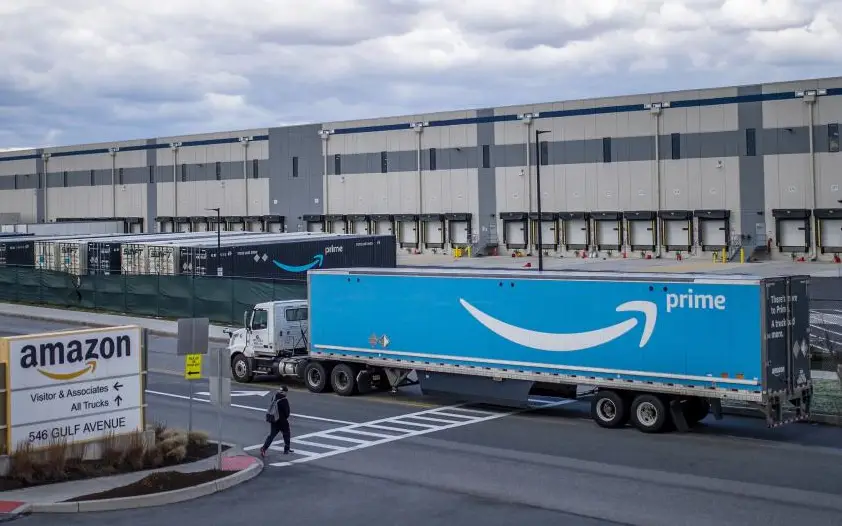US Senate Investigates Amazon’s Warehouse Safety Standards
The Senate Health, Education, Labor and Pensions Committee, led by Bernie Sanders (I-VT), is conducting an investigation into Amazon’s safety practices in its warehouses. Sanders has written a letter to Amazon CEO Andy Jassy, requesting information about the company’s response to safety concerns and urging him to address health and safety issues in the warehouses. Amazon has responded by disagreeing with Sanders’ claims and inviting him to tour one of its facilities.
Sanders’ nearly 2,400-word letter takes the retailer to task for reported injuries and unsafe practices at its warehouses. “The company’s pursuit of profit at all costs has resulted in dangerous physical environments, intense pressure to work at unsustainable speeds, and inadequate medical care for tens of thousands of Amazon workers each year,” Sanders wrote. “At every turn—from warehouse design and workstation setup, to work-rate requirements, to medical care for injuries, and the ensuing pressure to return to work—Amazon makes decisions that actively harm workers in the name of its bottom line.”
The letter contrasts Amazon’s history of warehouse injuries and safety complaints with its $1.3 trillion market capitalization, founder Jeff Bezos’ nearly $150 billion net worth and Jassy’s $289 million compensation over the past two years. It cites figures from the Strategic Organizing Center (SOC), a coalition of North American unions, which deem the company’s models “uniquely dangerous.” “In 2022 alone, Amazon warehouse workers suffered nearly 39,000 injuries, 95 percent of which were severe enough to require workers to either lose time from work or transition to a modified job,” Sanders wrote. “Amazon’s rate of serious injuries in its warehouses, at 6.6 per 100 workers, was more than double that of non-Amazon warehouses. And while Amazon workers make up just over a third of the nation’s warehouse workers, they were more seriously injured than all other warehouse workers in the United States combined.”
In an email to ReturnByte, Amazon disputed SOC’s information. “Our critics always have ways of conflating data to fit their story, but the fact is we’ve made progress and our numbers clearly show that. Since 2019, we’ve reduced the number of recordable accidents across our global network by over 23%, and we’ve reduced the number of lost-cause accidents by 53%. This is easily verifiable by examining the information we report to OSHA.” Additionally, the company highlighted a report detailing its “significant and measurable progress,” while showing us a blog post about its efforts to combat the effects of summer heat.
Sanders’ letter asks Jassy to explain why Amazon’s injury rate is “significantly higher than the warehouse industry average,” even though regulators have repeatedly identified steps Amazon could take to improve safety. It also asks the company to explain why Amazon’s claims of improved safety with robotics do not match data that shows its robot plants have a 28 percent higher accident rate than non-robot plants. Finally, it asks for communications about the connection between the work pace of workers and the incidence of accidents.
In addition to his letter, the senator created a website for current and former Amazon employees to submit stories about their experiences with the company. Sanders asked Jassy to respond by July 5.
This is far from the first complaint about Amazon’s security practices. The company’s inventory collapsed in December 2021, prompting action from Congress, which described Amazon’s response as “disappointing” and part of a “grossly inadequate safety culture.” In response to the collapse, Amazon adjusted its severe weather strategy but refused to build storm shelters in its warehouses. In addition, federal prosecutors and the U.S. Department of Labor last year announced an investigation into the company’s working conditions — a move that included OSHA inspections. In April, the SOC said Amazon was responsible for 53 percent of all serious warehouse injuries in the U.S., even though it employs about a third of the nation’s warehouse workers.
“When Amazon encounters worker injuries, it provides minimal medical care and hides them from regulators and workers’ compensation programs,” Sanders said. “This system forces workers to endure untold long-term pain and injury while Amazon makes incredible profits from their labor. It must not be allowed to continue.”




